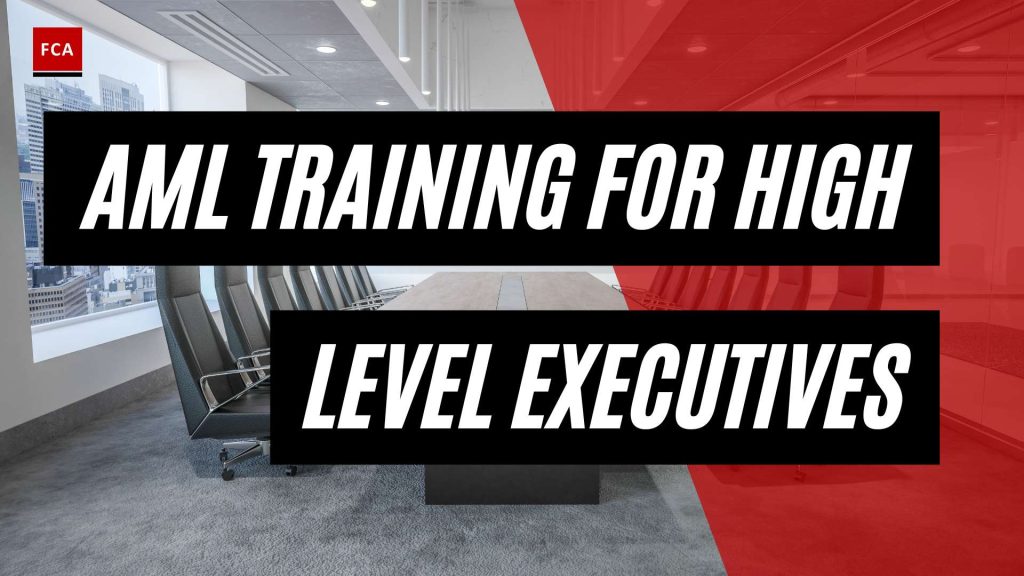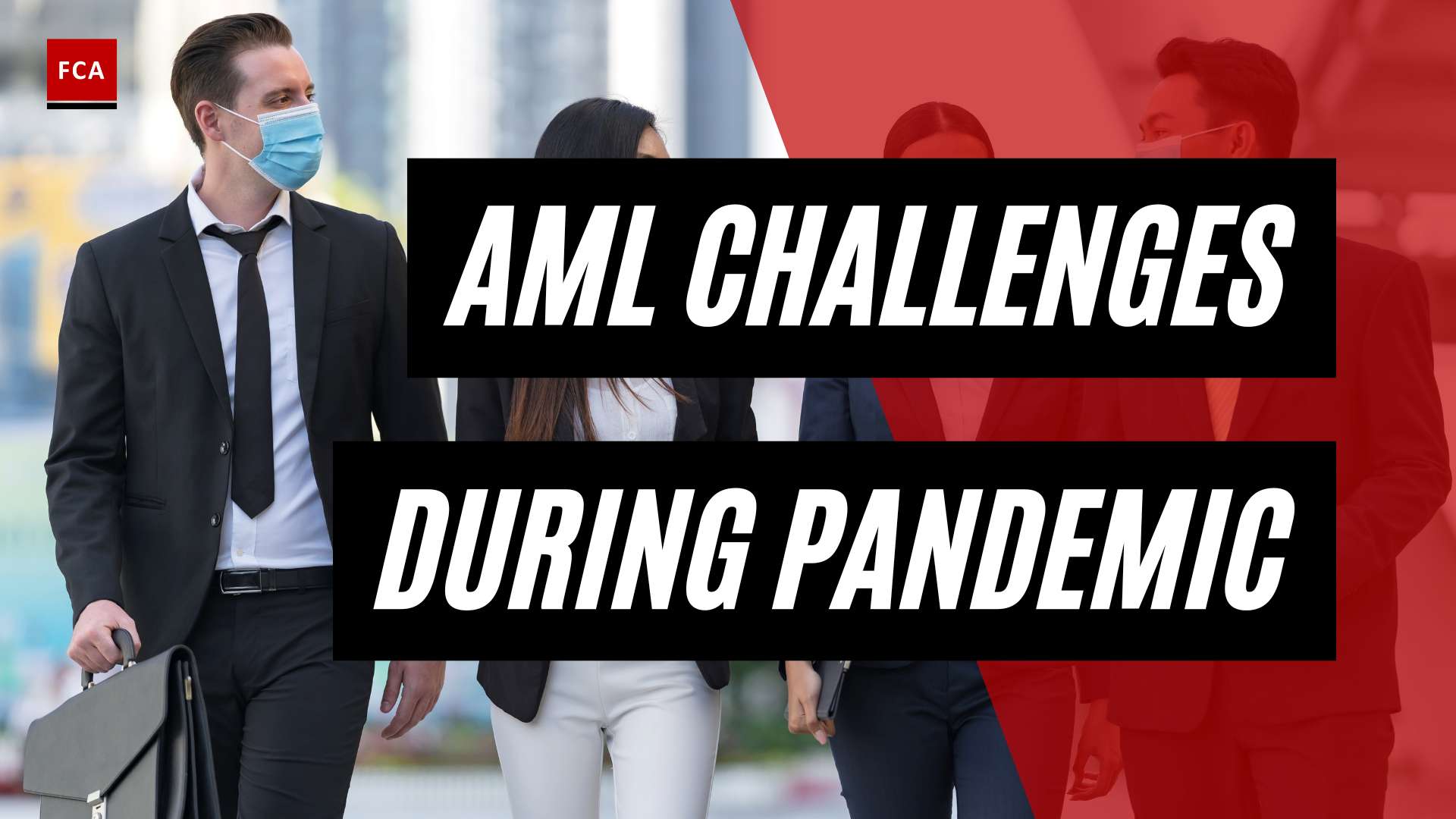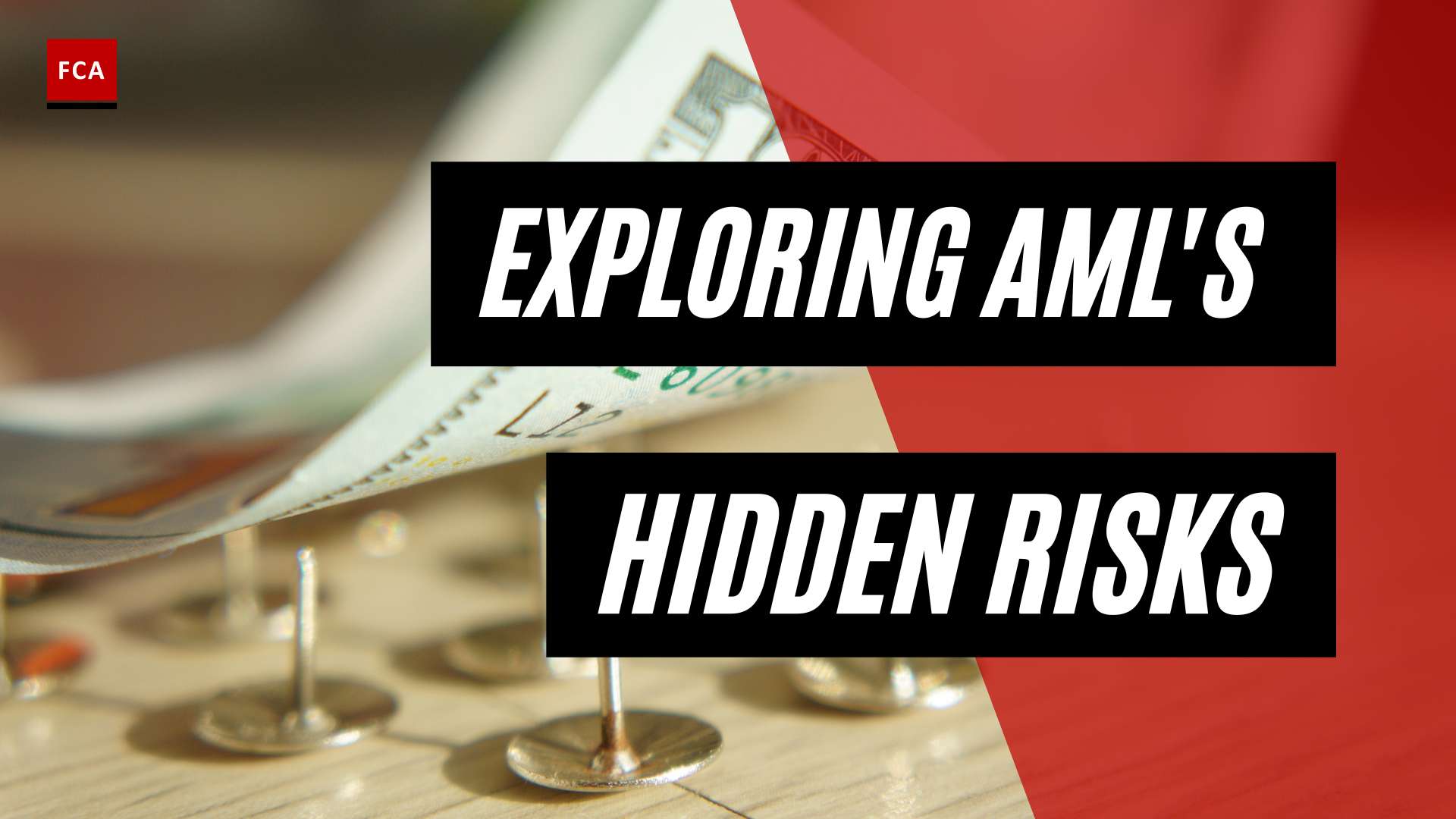Understanding AML Training for Senior Management
When it comes to combating money laundering and ensuring compliance with anti-money laundering (AML) regulations, it is essential for senior management to undergo comprehensive AML training. This section explores the importance of AML training for executives and the regulatory requirements associated with it.
Importance of AML Training for Executives
AML training for high-level executives plays a crucial role in mitigating the risks associated with money laundering and protecting the integrity of financial systems. By undergoing AML training, executives gain the knowledge and skills necessary to understand the complexities of money laundering and the potential consequences it poses to their organizations.
Executives who are well-versed in AML regulations and best practices are better equipped to identify suspicious activities and take appropriate measures to prevent money laundering within their institutions. AML training enables executives to develop a culture of compliance throughout the organization, ensuring that all employees are aware of their responsibilities in detecting and reporting suspicious transactions.
Moreover, AML training for executives helps maintain the reputation of the organization. By demonstrating a commitment to ethical business practices and compliance with AML laws and regulations, companies can avoid legal repercussions, financial penalties, and reputational damage. As highlighted by LinkedIn, the advantages of AML training include reducing the likelihood of legal repercussions, enhancing the detection and prevention of money laundering, and facilitating compliance with AML laws and regulations.
Regulatory Requirements for AML Training
Regulatory bodies around the world emphasize the importance of AML training for senior management. According to the Financial Crime Academy, high-level executives need to undergo AML training to understand the risks, vulnerabilities, and potential consequences of money laundering within their institutions. This training is critical in preventing financial crimes and maintaining compliance with regulations.
The training should cover the legal framework and regulations related to AML, as well as practical scenarios and case studies to provide a comprehensive understanding of money laundering risks and prevention strategies. By familiarizing themselves with AML regulations, executives can ensure that their organizations are compliant and minimize the risk of non-compliance penalties.
It is worth noting that AML training requirements may vary across jurisdictions and industries. Therefore, it is essential for organizations to stay updated on the specific AML training requirements applicable to their sector and the regions in which they operate.
By investing in AML training for high-level executives, organizations can foster a culture of compliance, enhance their ability to detect and prevent money laundering, and demonstrate their commitment to ethical business practices. AML training for executives is not only a regulatory requirement but also a strategic initiative that supports overall business objectives and safeguards the integrity of financial systems.
Key Components of AML Training for Senior Management
To ensure effective anti-money laundering (AML) compliance within an organization, it is crucial for high-level executives to undergo comprehensive AML training. This training equips senior management with the knowledge and skills necessary to uphold regulatory requirements and mitigate money laundering risks. Key components of AML training for senior management include understanding the legal framework and regulations, money laundering risks and prevention strategies, and fostering a culture of compliance.
Legal Framework and Regulations
AML training for senior management begins with a thorough understanding of the legal framework and regulations governing money laundering. In various business sectors, including financial services, accountants, estate agents, and law firms, adherence to money laundering regulations is mandatory (VinciWorks). Familiarity with regulations such as the Money Laundering Regulations 2017 is essential to ensure compliance. AML training programs should cover the legal obligations, reporting requirements, and penalties associated with non-compliance.
Money Laundering Risks and Prevention Strategies
Senior management must be well-versed in the risks associated with money laundering and the strategies to prevent it. AML training should provide insights into the techniques used by money launderers, red flags indicative of suspicious activities, and methods to mitigate these risks. By understanding the vulnerabilities within their institutions, executives can implement robust controls and procedures to detect and prevent money laundering. Training programs should emphasize the importance of due diligence, customer identification, transaction monitoring, and the role of senior management in overseeing these processes.
Fostering a Culture of Compliance
A strong culture of compliance is crucial in preventing money laundering and ensuring the effectiveness of an organization’s AML program. AML training for senior management should focus on fostering this culture throughout the organization. Executives play a vital role in setting the tone from the top and promoting ethical behavior. Training programs should highlight the importance of leading by example, encouraging open communication, and creating an environment where employees feel empowered to report suspicious activities without fear of retaliation. By instilling a culture of compliance, organizations can enhance their overall AML efforts and minimize the risk of non-compliance.
By incorporating these key components into AML training for senior management, organizations can strengthen their AML compliance programs and ensure that high-level executives are equipped with the necessary knowledge and skills to effectively combat money laundering. This training not only helps organizations meet regulatory requirements but also demonstrates their commitment to ethical business practices and the fight against financial crimes.
Tailoring AML Training for High-Level Executives
When it comes to AML (Anti-Money Laundering) training for high-level executives, a one-size-fits-all approach is not effective. AML training should be tailored to the specific roles and responsibilities of these executives to address the unique challenges they face in combating money laundering and ensuring compliance with regulatory requirements (Financial Crime Academy). In this section, we will explore three key aspects of tailoring AML training for high-level executives: role-specific training, continuous learning and updates, and challenges and unique considerations.
Role-Specific Training
High-level executives, such as board members and C-suite executives, play a critical role in maintaining oversight for AML compliance programs. Their training should focus on understanding the risks, vulnerabilities, and potential consequences of money laundering within their institutions (Financial Crime Academy). By providing role-specific training, executives can gain a deeper understanding of their responsibilities in preventing financial crimes and maintaining compliance with regulations.
Role-specific AML training for high-level executives should cover topics such as their legal obligations, the regulatory landscape, and the importance of setting the tone from the top. This training should also emphasize the value of fostering a culture of compliance throughout the organization, ensuring that all employees are aware of their roles and responsibilities in preventing money laundering activities (Financial Crime Academy). By being well-informed about policy issues and authorizing necessary resources, high-level executives can provide effective oversight of AML compliance programs (LowerRiskGroup).
Continuous Learning and Updates
In the ever-evolving landscape of financial crimes, continuous learning and updates are crucial for high-level executives. AML training should provide executives with the latest information on trends, typologies, and techniques used by money launderers. This enables them to adapt their strategies and defenses against evolving threats (Financial Crime Academy).
To ensure continuous learning, executives can participate in industry conferences, workshops, and seminars focused on AML. These events provide opportunities to network with peers, learn from experts, and stay updated on emerging best practices. By investing in continuous learning, high-level executives can enhance their knowledge and expertise in combating money laundering.
Challenges and Unique Considerations
High-level executives face unique challenges when it comes to AML compliance. They are responsible for setting the organization’s risk appetite, allocating resources, and making critical decisions to mitigate risks. AML training should address these challenges and provide guidance on how executives can navigate through complex regulatory requirements.
Some of the unique considerations for high-level executives include understanding the global nature of money laundering, managing cross-border transactions, and dealing with politically exposed persons (PEPs). AML training should equip executives with the knowledge and skills necessary to identify and address these challenges effectively.
By tailoring AML training for high-level executives, organizations can ensure that their top-level management is well-equipped to combat money laundering and maintain compliance with regulations. Role-specific training, continuous learning, and addressing unique considerations empower executives to lead by example, foster a culture of compliance, and mitigate the risks associated with financial crimes.
The Role of AML Compliance Officers
Within the realm of anti-money laundering (AML) compliance, AML Compliance Officers play a critical role in overseeing the development and implementation of effective AML programs within financial institutions. Their responsibilities encompass various aspects of regulatory compliance and risk management. Let’s delve into the specific responsibilities of AML Compliance Officers, as well as the importance of reporting and communication, and the guidelines and regulations that govern their role.
Responsibilities of AML Compliance Officers
AML Compliance Officers serve as the custodians of AML programs, ensuring that financial institutions adhere to applicable regulations and industry best practices. Their responsibilities include:
-
Developing and implementing AML policies and procedures: AML Compliance Officers are responsible for establishing comprehensive policies and procedures that address regulatory requirements and mitigate the risk of money laundering activities. These policies and procedures guide the institution’s employees in identifying and reporting suspicious transactions.
-
Conducting risk assessments: AML Compliance Officers are tasked with conducting regular risk assessments to identify potential vulnerabilities and develop strategies to mitigate money laundering risks. These assessments involve analyzing customer profiles, transaction patterns, and emerging trends related to money laundering.
-
Monitoring and reporting suspicious activities: AML Compliance Officers are responsible for monitoring customer transactions, identifying any suspicious activities or patterns that may indicate money laundering, and promptly reporting such activities to the appropriate regulatory authorities. They ensure that the institution’s reporting obligations are met in accordance with regulatory requirements.
-
Training and awareness: AML Compliance Officers play a vital role in promoting a culture of compliance within the organization. They provide training and awareness programs to employees, ensuring that they have the necessary knowledge and skills to recognize and report potential money laundering activities.
-
Compliance audits and testing: AML Compliance Officers conduct regular audits and testing of the institution’s AML program to assess its effectiveness and identify areas for improvement. These audits help identify any gaps or weaknesses in the program and ensure that the institution remains in compliance with regulatory obligations.
Reporting and Communication
Effective reporting and communication are crucial aspects of the AML Compliance Officer’s role. They serve as the intermediary between the financial institution and regulatory authorities, ensuring that relevant information is shared appropriately. AML Compliance Officers are responsible for:
-
Reporting suspicious activities: AML Compliance Officers must report suspicious activities promptly and accurately to the appropriate regulatory authorities, such as the Financial Crimes Enforcement Network (FinCEN) in the United States or the National Crime Agency (NCA) in the United Kingdom. Timely and accurate reporting is essential in combatting money laundering and supporting law enforcement efforts.
-
Communication with senior management and the board of directors: AML Compliance Officers maintain clear lines of communication with senior management and the board of directors. They provide regular updates on the institution’s AML program, highlight emerging risks, and ensure that senior management is aware of their compliance obligations. This communication is crucial to ensure that AML compliance is embedded within the organization’s overall risk management framework.
Compliance Officer Guidelines and Regulations
AML Compliance Officers operate within a regulatory framework that outlines their responsibilities and expectations. Guidelines and regulations vary by jurisdiction, but they provide a foundation for the role of AML Compliance Officers. For example, the European Banking Authority (EBA) released guidelines in August 2021 to provide clarity on the role of AML Compliance Officers in EU firms, aiming to address concerns of uneven implementation and poor communication between officers and senior management following the Fourth Anti-Money Laundering Directive.
Compliance Officer guidelines and regulations emphasize the independence of AML Compliance Officers from the institution’s business infrastructure. This independence allows officers to objectively scrutinize and evaluate AML risks without undue influence. It also underscores the importance of clear lines of communication with the board of directors, promoting transparency and ensuring that compliance obligations are understood and enforced.
By fulfilling their responsibilities, maintaining effective reporting and communication channels, and adhering to relevant guidelines and regulations, AML Compliance Officers contribute significantly to the overall effectiveness of an institution’s AML program. Their role is instrumental in safeguarding the integrity of the financial system and combatting money laundering activities.
Building an Effective AML Compliance Program
To establish a robust anti-money laundering (AML) compliance program, organizations must focus on key components such as a well-rounded compliance team, appropriate infrastructure, compliance engineering and automation, as well as comprehensive staff training and awareness.
Compliance Team and Infrastructure
Assembling a top-notch compliance team is essential to building an effective AML compliance program. This team should consist of individuals with expertise in compliance, risk management, and anti-financial crime. They play a pivotal role in identifying compliance inconsistencies early, minimizing risks, and providing effective compliance solutions (Unit21 Blog).
Additionally, organizations should appoint a Bank Secrecy Act Compliance Officer (BSA CO) who serves as the link between senior management and the compliance team. The BSA CO ensures that the executive’s vision is carried out and that the compliance program aligns with regulatory requirements (Unit21 Blog).
To support the compliance team, organizations must establish a solid compliance infrastructure. This includes implementing appropriate systems, tools, and technologies to facilitate effective monitoring, reporting, and analysis of financial transactions. An efficient infrastructure allows for streamlined compliance processes and enables the compliance team to work more effectively and efficiently.
Compliance Engineering and Automation
In today’s rapidly evolving regulatory landscape, compliance engineering plays a crucial role in building an effective AML compliance program. Compliance engineers are responsible for automating and streamlining compliance processes, which allows compliance officers, analysts, and the Chief Compliance Officer (CCO) to work more efficiently and create compliance procedures faster (Unit21 Blog). By leveraging technology and data-driven solutions, compliance engineering helps organizations stay ahead of potential risks and ensure timely detection and prevention of money laundering.
Staff Training and Awareness
Compliance training for staff is a critical component of any effective AML compliance program. It ensures that employees are aware of internal and external regulations and laws that affect business operations. Training should cover various compliance subjects, including Know Your Customer (KYC) procedures, transaction monitoring, customer due diligence, and regulatory reporting (Unit21 Blog). By providing comprehensive training, organizations equip employees with the necessary knowledge and skills to fulfill their compliance obligations effectively.
Training should be continuous and regularly updated to keep pace with evolving AML laws, regulations, and industry best practices. This helps employees stay informed and adapt to changing compliance requirements. By fostering a culture of compliance through training and awareness programs, organizations promote a collective commitment to preventing money laundering and maintaining ethical business practices.
By focusing on building a strong compliance team, leveraging compliance engineering and automation, and providing comprehensive staff training and awareness, organizations can establish an effective AML compliance program. Such a program ensures that the organization stays compliant with AML laws and regulations, mitigates the risk of money laundering, and maintains a positive reputation in the industry.
Consequences of Non-Compliance and AML Penalties
When it comes to Anti-Money Laundering (AML) compliance, the consequences of non-compliance can be severe for financial organizations and individuals. To ensure that high-level executives understand the importance of AML training, it’s crucial to discuss the potential legal repercussions and penalties associated with non-compliance.
Legal Repercussions and Penalties
Financial organizations that violate AML regulations can face both civil and criminal penalties, ranging from fines to jail time. The exact penalties may vary depending on the jurisdiction and the severity of the offense. For instance, in the United States, the Bank Secrecy Act (BSA) imposes fines of up to $500,000 and imprisonment for up to ten years for certain AML violations. The USA PATRIOT Act, enacted in response to the September 11 attacks, introduced measures to target financial crime associated with money laundering and terrorism financing. Violations of the USA PATRIOT Act can result in fines of up to $1 million or double the value of the transaction. These penalties highlight the seriousness of non-compliance and the need for effective AML training for high-level executives (Unit21).
AML Fines and Sanctions
Apart from legal repercussions, financial institutions may also face AML fines and sanctions. AML fines can vary depending on the jurisdiction and the specific offense committed. In the United States, for instance, regulatory bodies such as the Office of Foreign Assets Control (OFAC) can impose fines and penalties of up to $20 million, depending on the type of offense. These fines serve as a deterrent and emphasize the importance of robust AML programs and training.
Sanctions are another consequence of non-compliance. A financial institution that fails to meet AML requirements may be prohibited from conducting business with certain individuals, companies, or even countries. These sanctions can have significant implications for the reputation, operations, and future prospects of the institution.
Regulatory Bodies and Enforcement
Regulatory bodies play a crucial role in enforcing AML regulations and ensuring compliance. They conduct investigations, audits, and examinations to identify potential violations. In the United States, regulatory bodies such as the Financial Crimes Enforcement Network (FinCEN) and the Office of the Comptroller of the Currency (OCC) oversee AML compliance. European Union member states must comply with Anti-Money Laundering Directives (AMLDs) that establish regulatory requirements. The latest directive, 6AMLD, introduced stricter penalties for money laundering offenses, including increased prison sentences and higher fines (Unit21).
To avoid the consequences of non-compliance and potential AML penalties, high-level executives must prioritize AML training and ensure that their organizations have robust compliance programs in place. By staying informed about regulatory requirements, implementing effective risk mitigation strategies, and fostering a culture of compliance, executives can significantly reduce the risk of non-compliance and protect their organizations from legal, financial, and reputational harm.
The Benefits of AML Training for High-Level Executives
When it comes to combating money laundering and ensuring compliance with anti-money laundering (AML) regulations, providing AML training for high-level executives is essential. This specialized training equips senior management with the knowledge and skills necessary to effectively oversee AML efforts within their organizations. There are several key benefits associated with AML training for high-level executives, including:
Mitigating Risks and Enhancing Compliance
AML training for high-level executives plays a critical role in mitigating the risks associated with money laundering. By receiving comprehensive training on AML laws, regulations, and best practices, executives gain a deeper understanding of the complexities involved in money laundering schemes and the necessary preventive measures to implement. This knowledge enables them to make informed decisions, establish robust control frameworks, and ensure their organizations are compliant with AML requirements.
Moreover, AML training enhances executives’ ability to detect suspicious activities and improve the overall effectiveness of their organization’s AML program. By staying informed about emerging trends and new methods used by money launderers, executives can proactively adapt their strategies and implement necessary preventive measures to protect their organizations.
Staying Updated on Industry Standards
The field of AML is constantly evolving, with new regulations and industry standards emerging regularly. AML training for high-level executives ensures that they stay up to date with the latest developments in AML laws, regulations, and industry best practices. This knowledge empowers executives to make informed decisions and effectively manage AML risks within their organizations.
By staying updated on industry standards, high-level executives can also demonstrate their commitment to ethical business practices and maintain a positive reputation. This adherence to AML regulations not only protects their organizations from legal repercussions but also helps build trust with stakeholders, including customers, regulators, and investors.
Customized AML Training Programs
To cater to the specific needs of high-level executives, customized AML training programs are designed. These programs provide tailored content that aligns with the unique requirements of senior management. Riskpro, for example, offers customized AML training programs that cover a range of topics, including AML laws and regulations, risk management, and best practices in preventing and detecting money laundering.
These customized programs can be delivered on-site or online, offering a more engaging and efficient learning experience. By focusing on the specific challenges and responsibilities faced by high-level executives, customized training programs ensure that executives receive the knowledge and skills necessary to effectively manage AML risks and support their organization’s overall performance and reputation protection.
By investing in AML training for high-level executives, organizations can foster a culture of compliance, enhance their AML programs, and reduce the likelihood of legal repercussions. This proactive approach not only protects against financial and reputational damage but also demonstrates a commitment to ethical business practices and maintaining the integrity of the financial system.
Tailoring AML Training for High-Level Executives
When it comes to AML training for high-level executives, a customized approach is crucial to address their unique roles and responsibilities in the fight against money laundering. This specialized training equips executives with the knowledge and skills necessary to effectively manage AML risks and maintain compliance with regulatory requirements. Let’s explore the key considerations for tailoring AML training for high-level executives.
Role-Specific Training
High-level executives, such as board members, C-suite executives, and top-level management, play a critical role in shaping the AML compliance culture of an organization. Therefore, their training should focus on the specific challenges and responsibilities they face in combating money laundering. The training should encompass:
- Understanding the legal framework and regulations related to AML, ensuring executives are well-versed in the laws and regulations that govern their industry. This knowledge enables them to make informed decisions and guide their organizations in compliance.
- Exploring practical scenarios and case studies to provide a comprehensive understanding of money laundering risks and prevention strategies. This allows executives to identify potential vulnerabilities and develop effective risk management strategies.
Continuous Learning and Updates
The fight against money laundering is an ongoing battle, with ever-evolving techniques and typologies used by criminals. AML training for high-level executives should emphasize the importance of continuous learning and staying updated on the latest trends in financial crime. This includes:
- Providing executives with access to resources such as industry publications, webinars, and seminars to keep them informed about emerging AML threats and best practices (Financial Crime Academy).
- Encouraging executives to participate in conferences and workshops that focus on AML and financial crime. These events provide valuable networking opportunities and foster knowledge-sharing among industry professionals.
Challenges and Unique Considerations
High-level executives face unique challenges when it comes to AML compliance. Their training should address these challenges and provide guidance on how to overcome them. Some key considerations include:
- Navigating the complexities of global regulations and ensuring compliance across multiple jurisdictions, particularly for organizations with an international presence.
- Balancing the need for effective AML controls with the organization’s business objectives, ensuring that compliance efforts do not hinder growth and innovation.
- Effectively communicating AML policies and procedures to employees at all levels of the organization, fostering a culture of compliance and accountability.
By tailoring AML training to the specific needs of high-level executives, organizations can equip their leadership with the knowledge and tools necessary to effectively combat money laundering. This training mitigates risks, enhances compliance, and demonstrates a commitment to ethical business practices. With customized AML training programs, executives can stay updated on industry standards and best practices, ensuring their organizations maintain a strong defense against financial crime while protecting their reputation in the market.








